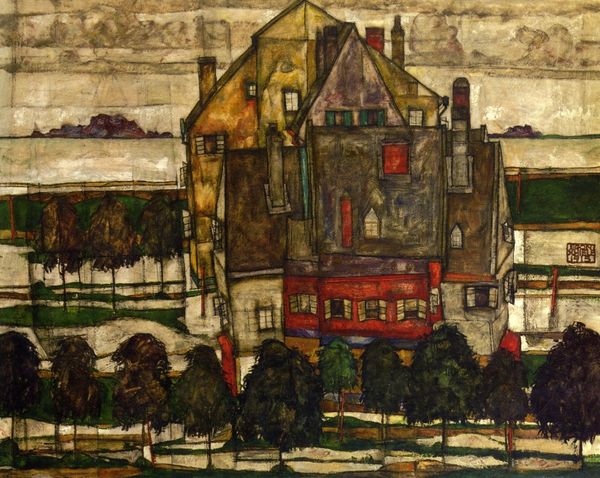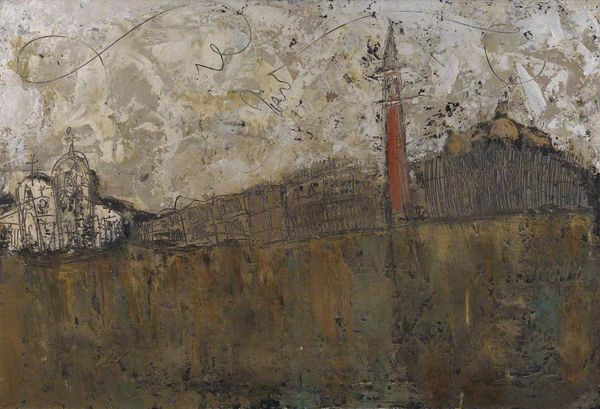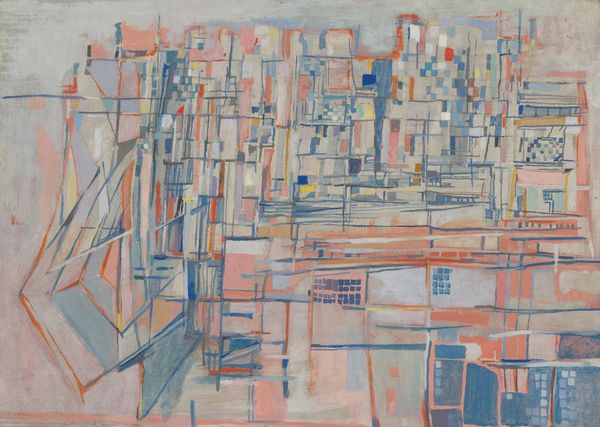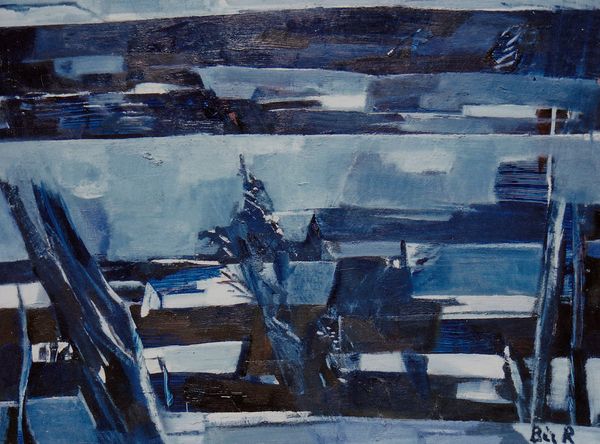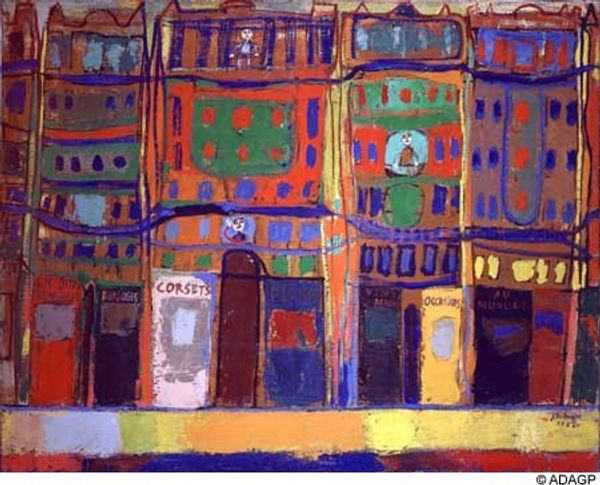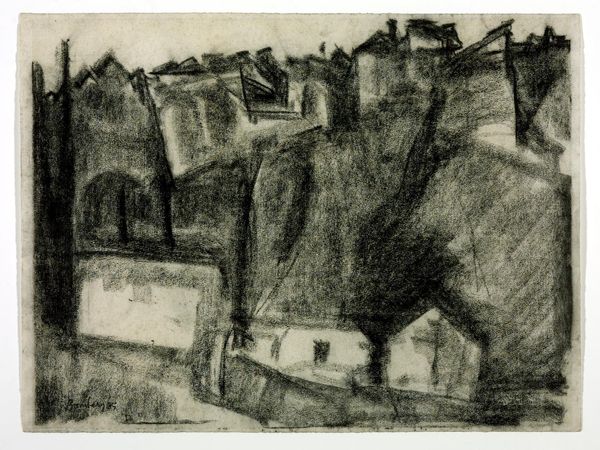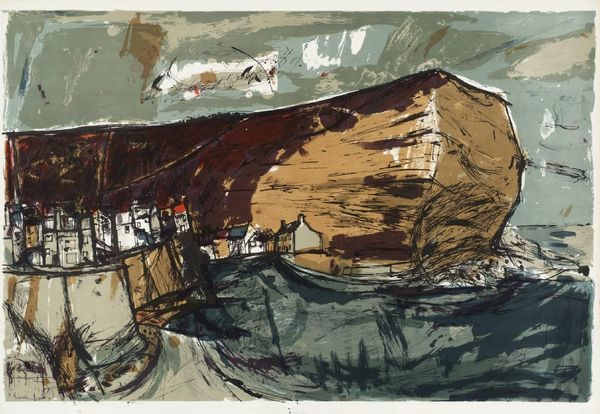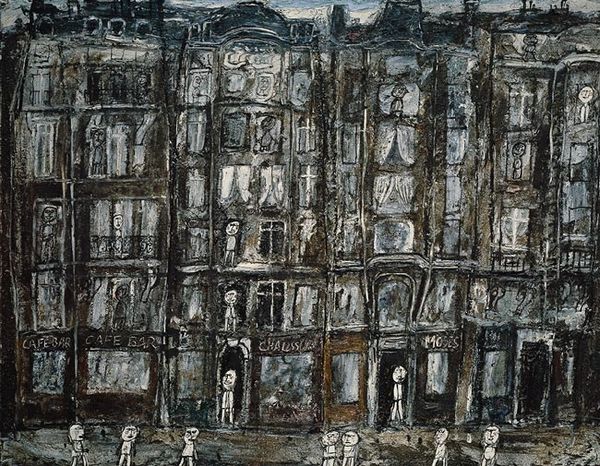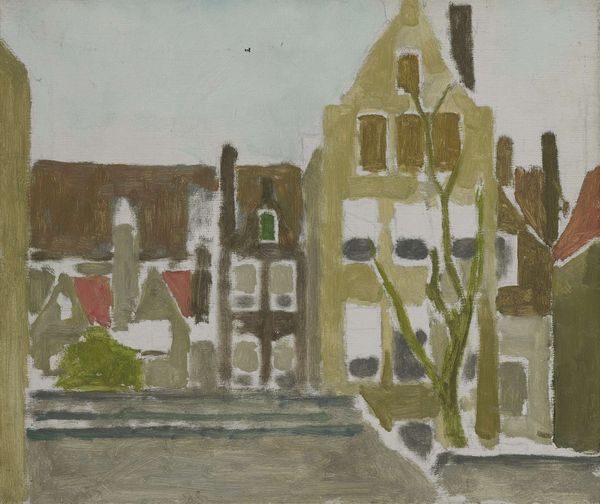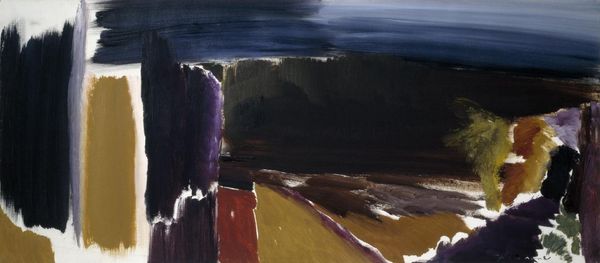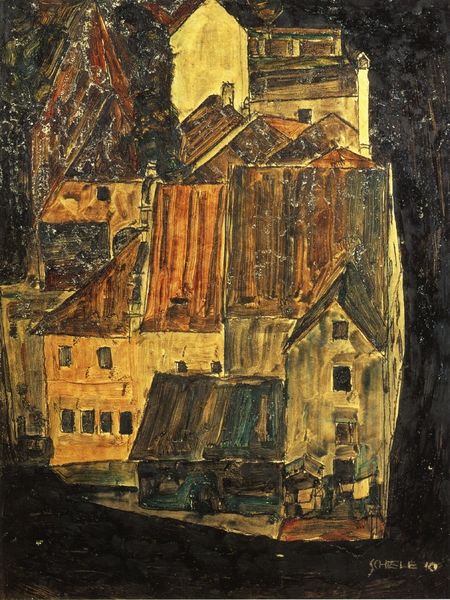
oil-paint
#
oil-paint
#
oil painting
#
geometric
#
expressionism
#
cityscape
Copyright: Public domain
Editor: This is "Vorstadt," created in 1914 by Egon Schiele, using oil paint. Looking at the buildings crammed together, I feel a sense of unease, as if they're suffocating. The colors are also really muted, except for those sharp red lines. What jumps out at you? Curator: Notice first how Schiele employs geometric abstraction within this cityscape. The houses aren’t rendered realistically; instead, we see a fracturing of form, a simplification into angular shapes. Consider the palette – the subdued ochres, greys, and browns contribute to the oppressive atmosphere you noted, but their relationship, a discord, provides its tension. How do these formal elements contribute to the painting's overall affect? Editor: It definitely creates a jarring effect. The muted colours versus the sharp red make it a little claustrophobic to look at. Is there a reason Schiele opted for these clashing visual elements? Curator: We observe the interplay of line and plane: notice the dominance of horizontal lines that flatten the perspective, contrasting with the vertical thrust of the buildings and the punctuating red marks. There’s a deliberate tension. Editor: That’s interesting – so, instead of focusing on depicting the houses realistically, he was more interested in how these lines and colors interact on the canvas. I see how the relationships he established create its unease. Curator: Precisely. The relationships between the shapes, colors, and lines themselves become the subject, rendering an emotional landscape. Editor: So, it is the painting's composition, more than the subject matter alone, which provokes that specific reaction in the viewer. I'll remember that as a critical insight, thanks! Curator: Indeed. Hopefully, it provides a pathway for appreciating formal elements in any work of art.
Comments
No comments
Be the first to comment and join the conversation on the ultimate creative platform.

